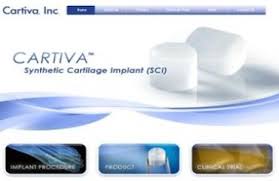Mark Reed, DPM
DABFAS FAPWCA

714-528-3668
Cartiva Arthritis Implant
Diagnosing Osteoarthritis of the Big Toe
Great toe arthritis, also known as hallux limitus and hallux rigidus, is diagnosed on a scale of severity ranging from level 0 to level 4:
Level 0: Normal joint, some damage to the cartilage
Level 1: Mild bone spur formation, but with no narrowing of the joint space
Level 2: Moderate bone spur formation, some narrowing of the joint
Level 3: Severe bone spur formation, narrowing of the joint, some obliteration of the joint
Level 4: Severe bone spur formation, complete joint obliteration
This scale is helpful to doctors when crafting a treatment plan. While levels 0 and 1 can usually be treated non-surgically with orthotics and shoe modification, level 4 typically requires a joint fusion – removing the joint altogether and fusing the bones.

Difficulty in Determining Course of Treatment
The difficulty in treatment usually arises with levels 2 and 3, when foot function could be restored, but not without some surgical treatment. In these cases, surgeons need to make treatment decisions at the time of surgery, and on a case-by-case basis.
For example, the surgeon may remove the bone spur, but find that the joint remains stiff and inflexible. In that case, an osteotomy may be performed by removing a fragment of the bone to restore some mobility. However, even this can be an insufficient treatment if there is substantial damage to the surface of the bone at the joint. Until now, there have been no surgical implants on the market that have adequately addressed the problem.
How Cartiva Works
Cartiva is a synthetic cartilage implant designed to act as a replacement for arthritic joint tissue. The gel material mimics the quality and density of bone, eliminating the problematic side effects of metal implants, which can damage or become absorbed by the bone over time.
After the bone spur is removed from the big toe joint, a small (1cm) hole is drilled into the head of the first metatarsal – the longer bone connecting the mid-foot to the big toe joint. Next, the Cartiva gel is injected into the hole, which expands to fill the space and overflows just a couple millimeters over the edges of the metatarsal head surface, like a muffin in a pan. This acts as a cap on the joint, decreasing the bone-on-bone contact responsible for arthritic pain.
Benefits of the Cartiva Implant
The Cartiva implant is very much similar to the strength of bone and cartilage, which results in limited to no bone absorption or damage. Additionally, there is no breakdown of the bone overtime so there is less chance of cyst formation.
Should the Cartiva implant wear out it can be replaced. And because the bone anatomy is kept intact, it is likely that the implant can be changed out with minimal downtime or risk.
The Cartiva implant procedure can be combined with bone spur removal procedures as well as bone realignment procedures, which is not often possible with other implant procedures. This allows the surgeon to reposition the bone and remove the spurs that limit motion for better results.
Should there be a need for future revision surgery to fusion of the joint, the anatomy is kept intact with the Cartiva implant system so there is no need for bone graft, and the surgical procedure is far less complicated than common revision implant surgeries today.
Recovery From the Cartiva Procedure
Recovery from the Cartiva implant procedure is usually uncomplicated. Patients are to use a pneumatic walking boot for 2-3 weeks to allow the soft tissue and incision to heal. Subsequently, physical therapy and / or given home exercises are performed while transitioning into a shoe. Patients usually return to normal activity and regular shoes after 5-6 weeks at which point swelling has decreased and range of motion has improved.















